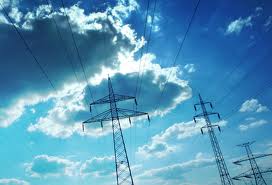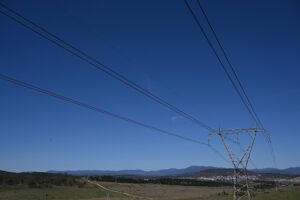NSW network operators want to charge 50% per cent more over the next 5 years than the regulator thinks is reasonable. The networks, it says, are still not taking into account lower peak demand, lower cost of capital, and potential efficiencies.
The Australian Energy Regulator has rejected the spending plans of several major electricity network providers, saying they didn’t take into account lower peak demand, the lower cost of capital, and the potential for more efficiencies.
 The AER has told each of the three distributors in NSW – which the state government wants to privatise – that their spending proposals for the next 5-year regulatory period were about 50 per cent higher than they need to be – even though they were a considerable cut from the previous period.
The AER has told each of the three distributors in NSW – which the state government wants to privatise – that their spending proposals for the next 5-year regulatory period were about 50 per cent higher than they need to be – even though they were a considerable cut from the previous period.
Ausgrid, for instance, asked to be able to recoup $10.1 billion from its 1.6 million customers in the Sydney to Hunter region over the next five years, and was permitted just $6.5 billion.
Endeavor Energy, which operates in western Sydney and the Illawarra, asked for $4.3 billion and got just $3.0 billion, while Essential Energy – which operates in the rest of the state – asked for $5.6 billion and was allowed just $3.7 billion.
In the ACT, Actew AGL wanted to spend $892 million, but the AER allowed just $555 million.
The draft rulings are part of a big game between the networks and the regulators over how much they can spend on upgrades, charge for maintenance, and for the cost of capital. The networks have a history of asking too much, and while the AER has sought to cut them down in the past, they have often been over-ruled, or forced to compromise on appeal.
(The AER decides how big the revenue pie will be for the networks. In an associated decision, the Australian Energy Market Operator has confirmed new rules that will require networks to introduce “cost reflective” tariffs, which will likely mean higher fixed and/or demand charges, which could affect households with solar arrays).
Those appeal rules have now been toughened, thanks to the massive fallout over soaring electricity bills which have been driven mostly by network costs, which account for half of most bills, and more than half of recent increases.
The most recent investment – $45 billion over the last five years – has been slammed by critics. Some say one third of that was to meet peak demand that never occurred, others say Australia now has a bigger but dumber grid, when what it really needed was a smaller and smarter one.
Hence the focus on this new round, particularly in light of the incursion of solar and battery storage into the grid, and the emergence of a new decentralised energy model. The AER, in its draft decisions, said that its estimate should result in a lowering of electricity costs, rather than a rise if the networks were allowed to have their way.
“We estimate that our draft decisions, if implemented, would reduce annual electricity bills for a typical residential household living in NSW, on average, by $219 (10 per cent) in 2015–16,” AER chair Ms Paula Conboy said in a statement.
“Similarly, annual electricity bills for small business customers, such as shop owners, would reduce by an average of $360 (10 per cent) in 2015–16.” She said these reductions would be followed by small increases in each of the three subsequent years.”
If the networks had their way, then the average bill would have risen by $56 (Ausgrid), $86 (Endeavour) and $157 (Essential) a year.
The AER says it is clear to them that the networks could find more efficiencies, and because demand had fallen, and would continue to fall, they were under less pressure to expand their network.
Yet this did not seem to have registered with the network management. The AER accused Ausgrid, for instance, of “giving little weight” to these key drivers.
“While the key drivers of efficient revenue indicate a revenue reduction is appropriate, Ausgrid proposed increases to overall revenue. Ausgrid seems to give relatively little weight to these key drivers
The AER noted that Ausgrid had yet to update its demand forecasts for the 2015-19 period. It said it could lead to even more downward revisions to expenditure forecasts.
While the key drivers of efficient revenue indicate a revenue reduction is appropriate, Ausgrid proposed increases to overall revenue. Ausgrid seems to give relatively little weight to these key drivers.
It also complained that the cost of capital estimates from the government-owned businesses were also inappropriate, and did not reflect the fact that interest rates and risk premiums are now materially lower than in 2009.
Ausgrid wanted to incorporate in its bills to customers a rate of return of 8.83 per cent, the AER said it could have 7.15 per cent. Ausgrid wanted operating expenditure of $2.88 billion, the AER said $1.78 billion was better. And Ausgrid wanted $4.42 billion in new capital expenditure, and the AER allowed it just $2.55 billion.
The network lobby group, the Energy Networks Association, which has never conceded gold plating in the past, wants solar incentives reduced, higher fixed charges to consumers, and argued that it would be too expensive to quit the grid, said the AER ruling threatened the reliability of the network – an old favourite of those arguing against carbon prices, renewable energy, or any much change at all.
It said the cuts were unsustainable and the lobby group would seek an urgent meeting with the AER. “Australian energy consumers rely on future investment to ensure new customers can be connected and assets can be replaced to maintain security and reliability,” ENA chief John Bradley said in a statement.
He said consumers would ultimately pay more if networks were prevented by the AER from “prudent funding” of operations, maintenance and reinvestment.
Unions went even further, saying that the cost allowance by the AER would cause blackouts and thousands to lose their jobs. “Blackouts will be more likely on the hottest and coldest days, as power demand surges, reconnections will be slower following natural disasters, bushfire risks are likely to increase, and the safety of workers and the public will be put at risk,” the main electrical union said.
But Conboy told RenewEconomy that the AER stood by its decision. It also released new analysis that showed the networks in ACT and NSW were far less efficient than the privatised networks in Victoria and South Australia. “We stand by our analysis. We should ask ourselves why customers in NSW and the ACT should pay more for the same service.”
The networks will be able to submit another application before a final ruling by the AER next April. If still not satisfied, the networks can appeal to a tribunal, but now only if they can show there is a “materially preferable outcome” from a review.
RenewEconomy asked Conboy if the network revenue application were simply a case of them prosecuting “business as usual” rather than the transformation – the “prosumer revolution” – identified by new AER chief executive Michelle Groves, the chief executive of the AER.
Groves said last month: “The electricity industry certainly is changing. In fact it is not much of a stretch to say that the next couple of decades will witness something of a revolution in the way small customers interact with the electricity industry. In the future there will be more scope for even the smallest energy users to become active participants in the energy market.”
Conboy said we would have to ask the networks if they were focused on business as usual.









